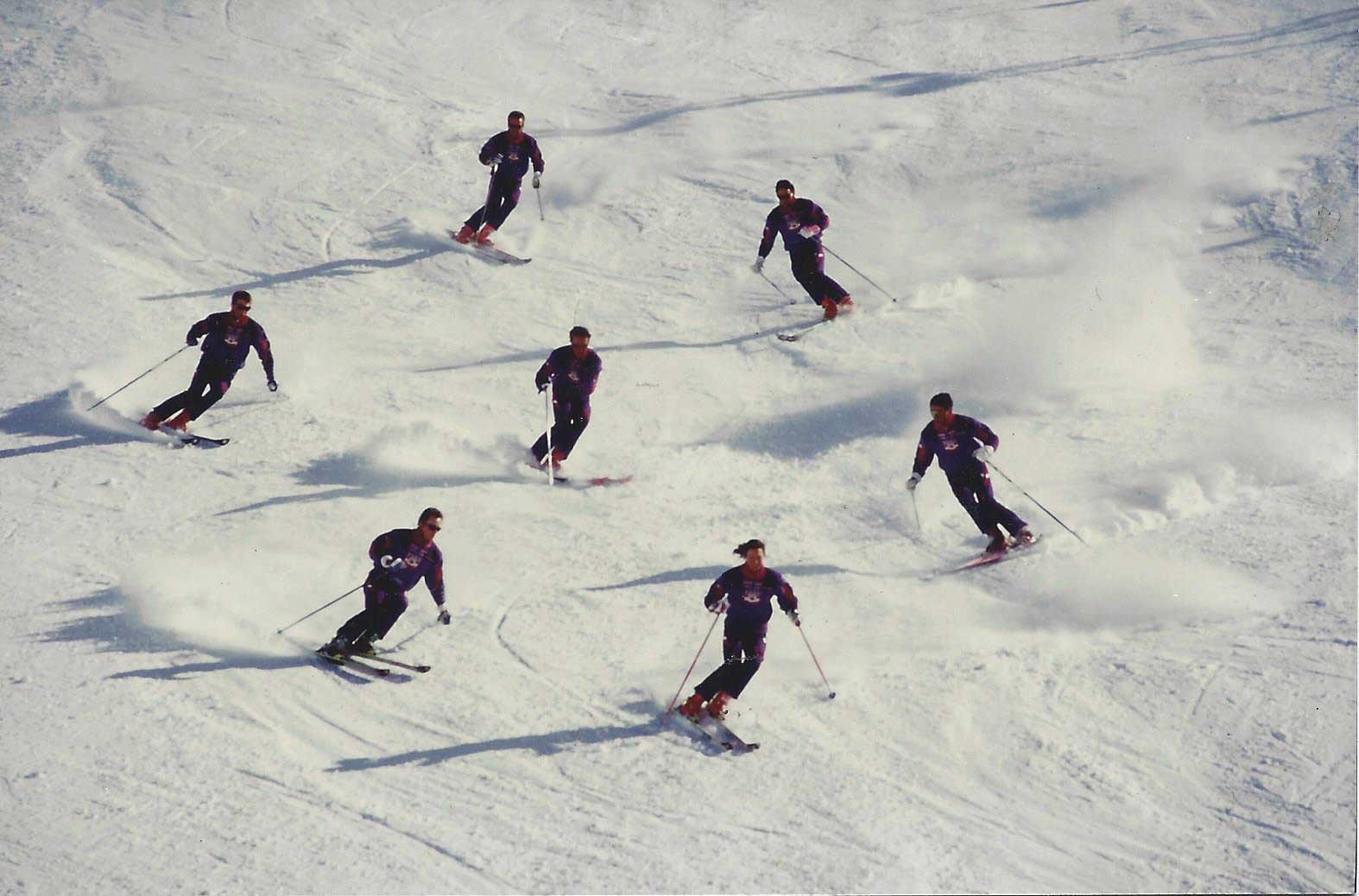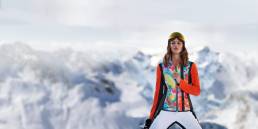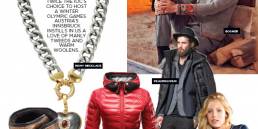Why there’s only ever been a single way to ski.
here has always only ever been a single way to ski: the Austrian way. Others have tried. French, Swiss, Scandinavians, North Americans. They’ve played with technique, invented terms, shared ideas at G7-like forums called Interski. “Dip a shoulder here,” they’d say. “No, rotate your body there.” Up-unweight. Down-unweight. Skid. Stem. Flex. Edge. Glisse. The list goes on; the manuals are multiple. Films, books, diagrams, videos, heated discussions. Friendships have been lost and made over when to bend the knees or how to carve a ski. But truly, privately, when no one is listening, ask any ski school instructor of any generation at any ski area from Australia to the Andes and they’ll grudgingly admit it. Forget the French. Never mind the Swiss or the Scandinavians. And the North Americans? No idea. The Austrian way is the way, full stop; there is no other. When it comes to the best way to ski, the rest of us have always been chasing Österreich.

Let’s blame a man called Kruky (KREW-kee). Full name: Stefan Kruckenhauser, a professor/photographer who, in 1934, made his way to St. Christoph am Arlberg, a small, sleepy, snow-swept ski village situated just above St. Anton. St. Christoph was home (and still is) to Austria’s state-run school of ski technique: the Bundessportheim, also known as the Bundy. In 1934, Kruky was anointed the Bundy’s all-hail leader.
Time out! What we need to appreciate is the influence of the Bundy. It is (or was) Austria’s Oxford, a place revered by Austrians—countrymen and women as devoted to skiing as Canadians are to hockey. There might be as many ski stars in Austria per capita as there are NBA stars in America. Hermann Maier. Anna Veith. Marcel Hirscher. Toni Sailer. History dictated that to be accepted as a student of the Bundy—a chance to study skiing, guiding, mountaineering—well, for an Austrian, you’d made it. To be appointed head of the Bundy? You were the next Messiah.
Which brings us back to Kruky. Short. Stocky. Charismatic. Charming. Kruky had crinkly, honey-bronzed skin and his own dogmatic ideas about skiing. At 29 he’d cut teeth on the teachings of Hannes Schneider, another Austrian who, prior to World War II, was master of technique; a man whom author John Fry called “the pope of ski instruction.” As the Bundy’s new pope, Kruky was just as inventive and even more insistent. During his reign, Kruky brought about radical change to the way the world skied by promoting a twisting, pretzel-like technique. You may have heard of it; it’s called wedeln. He spread his wedeln word via films, photographs, articles, and books that he produced himself and spread around the globe. Kruky disciples gathered like moths to a bright, white light. Just ask Paul Romagna, he was one of them.
“It was like getting a position at Stanford or Yale,” says Romagna, who at 22 and as poor as a Salzburg church mouse arrived at the Bundy in the winter of 1969/70 on long, straight skis and lace-up boots. His mission: to study ski instruction. “It was like arriving at a palace or the holy grail of ski teaching:
so much tradition, so much history. I walked through those rooms overwhelmed by a special aura. And there was Professor Kruckenhauser: choppy, old, big white hair. Every Austrian—especially every Austrian ski instructor—knew his name. If he said the snow is black, 10,000 ski instructors would nod and say, ‘Yes, the snow is black.’”
To state that Kruky was revered is to make an understatement. “When he talked you could hear a needle drop,” Romagna remembers. “He was a fearful figure. If you didn’t agree with him, he’d jump out of his skin, but no one ever dared do that. What you wanted was for Kruky to put his arm around your shoulder and talk to you, really talk—the topic always ski teaching, the man was passionate about methodology. At the end of my term there he called me up in front of everyone and told me I’d topped the course, asked me if I’d join his team. I couldn’t move, it was like Christmas came early. Even now I get emotional.”
What we must remember, what’s imperative to understand is that at the outset of Kruky’s tenure, says Romagna, “the world had nothing.” There was no structured ski teaching system. Kruckenhauser was mastering the way to ski and teach skiing, creating a step-by-step system, teaching it to his Bundy boys, filming and photographing everything, producing manuals, demonstrating with synchronized skiing, pushing it all out to the ski world—and the ski world was watching and listening. Canadians. Americans. Eastern Europeans. Kiwis. The Japanese, especially. Starting in 1951, rapt audiences at international ski congresses (Interskis) would take Kruky’s word as if it were gospel. Everyone wanted to ski the Austrian way. Once, says Romagna, Kruky arrived at the Bundy after three weeks in Japan with a group of Japanese in tow. Their mission: to study Austrian ski technique. “But while he’d been away, we’d been partying,” Romagna says sadly. “We hadn’t trained, we were nervous. We went out there and demonstrated and we were sure it didn’t go well, that we were going to get a headwash! But at the end of the day Professor Kruckenhauser said, ‘You have made me proud; they were so impressed. Thank you for a great performance!’” Romagna sighs. “We were convinced this was the way the world has
to ski.”
It has to be said: Not everyone agreed with Professor Kruckenhauser. At least, not on that last bit. Other ski nations, especially the French, argued fiercely. Kruky’s jet-turn technique presented at Interski in the early ‘70s, for example, drew a lot of enemy fire. Says Romagna: “It just didn’t go down well.”
Around the same time a man named Franz Hoppichler (Hoppi) married Kruky’s daughter. Hoppi, who’d already headed the Austrian Ski Team (think: NFL’s Bill Belichick) left racing to join the Bundy as his new father-in-law’s lieutenant. Hoppi was equally charismatic and equally revered, but, according to Romagna, was more open to
suggestion. Taking over as the Bundy’s head when Kruky retired, Hoppichler was comparatively open minded and tolerant of opposing points of view. He ventured as far as to suggest that (gasp!) there is no Austrian ski technique. “Hoppi said ski technique is international, determined by the laws of nature,” Romagna says. Hoppichler believed a nation can have its own ski teaching method, but not a technique. Technique is determined by laws other than Austrian.
Still, Hoppi will go down in ski history with Kruckenhauser as the Bundessportheim’s two greatest leaders. Reigning through the 1980s and ‘90s, Hoppi led legions of ski instructors through their Staatlicher exams—the nation’s highest level of ski certification—then on to the revered Austrian demonstration (demo) team. Among them was Egon Hierzegger, who, like Romagna, was wet behind the ears in the ‘80s when he arrived in St. Christoph at the age of 19. Hierzegger—now an MBA, business owner, city councilor, and ski examiner—describes an era of hard work and hard parties: training by day and clashing beer steins by night; a fraternity of mostly men skiing in tight formation on open slopes, Mozart on the P.A., their spectacle looking every bit like snowbound Lipizzaners, Vienna’s ballet of white stallions. Swing right, swing left. Stay in synch. Ankles, knees, hips and shoulders perfectly stacked. High-speed performances under the stars became major events complete with fireworks, torches, and adoring crowds, with Hoppichler handsome and headstrong, greeting the masses, shaking hands. “We were his boys,” says Hierzegger. “When we did something wrong, we got a proper headwash, but when we came under attack by someone else, he’d jump in to protect us. We’d do some crazy things and he loved it. He’d say, ‘These are my boys.’”
It’s the kind of camaraderie that lasts. Decades later the Bundy boys stand by their mates, attending weddings, birthdays, retirements, and funerals. Stories are told and re-told. When suggested they should write a book on the Bundy’s past, both Hierzegger and Romagna cringe. “It’d never get past the censors,” Romagna says.
So, in this Bundy story, where are all the women?
It’s true, in the early days the ratio heavily favored men. Hierzegger guesses 10 men to one woman in his day, and the women that were there were most often Olympians and ex-World Cup. Not so now. Zoom forward to 2021 and the school has entered the modern age. Among the women who’ve skied its hallowed halls: Nina Gigele, a ski model, freelance race coach and ski guide (skiwithnina.fun) who arrived at the Bundessportheim in 2012 at the age of 21.
“There was so much power and passion in their skiing. They were visionaries, prophets.”
Once on track for the Austrian Ski Team, Gigele’s hopes were dashed at 16 by an accident that nearly cost the up-and-comer her left leg. “Doctors told me I wouldn’t be able to ski anymore; I had to re-learn how to walk.” Climbing back from severe injury tested every ounce of Gigele’s mental strength, but she was determined to achieve a new goal: earning Staatlicher certification at the Bundessportheim. “I was eager to learn,” she says, “and I wanted to learn from
the best.”
Gigele’s grandfather had done the same, once a student of both Kruckenhauser and Hoppichler, he became a revered Austrian race coach. “My grandfather always told me how it was in those days—what they did. There was so much power and passion in their skiing. They were visionaries, prophets.”
Is it the same now? The Bundessportheim? The Austrian Way? Does the school in St. Christoph still carry that
same cachet?
The answer depends on who you ask.
The homey, Austrian-style structure—bunk rooms, fireplaces—that once housed the Bundessportheim is gone, an ultra-modern building of metal and glass and resort-style rooms in its place since 2006. The Bundy is no longer state run; it’s now a private enterprise, a business known in English as the Ski Austria Academy. Says Paul Romagna: “To go back there breaks my heart.”
But the modern structure and approach appeals to a professional like Nina Gigele, who maintains that while the Bundy has lost its Ivy League looks and some of its international revere: “If you are passionate about the technical side—how skiing works—then it’s still a place to go. I learned so much while I was there. I could focus on small things within my technique, the mindset of skiing. It’s like going to a university. I suggest to many young people who are eager to learn and who are open-minded that it’s the place
to go.”
And what of the Austrian Way? If the Bundessportheim’s iconic status has faded, then so must have Austria’s control on the evolution of skiing. After all, Hoppichler foreshadowed the future of ski technique when he claimed no one nation had the patent on the right way to ski, that it’s governed instead by laws of nature. “Differences between nations were once really big,” says Egon Hierzegger, “but now we’re all much closer together. Carving skis came along and things became more standard.” And, in the writing of its own history, the new Academy put it this way: “In the last decade of the 20th century, disputes about ski technology increasingly took a back seat. In the interest of the tourism industry, which wants to advertise skiing as a joyful leisure trend, the similarities are emphasized.”
So, no more one way to ski? No more Austrian domination? Nations that once fought for their own technical territory are now synchronized both on the slopes and off?
Nah. There’s always only ever been one way to ski: The Austrian Way. Ask anyone. We’re all still chasing Österreich.`




